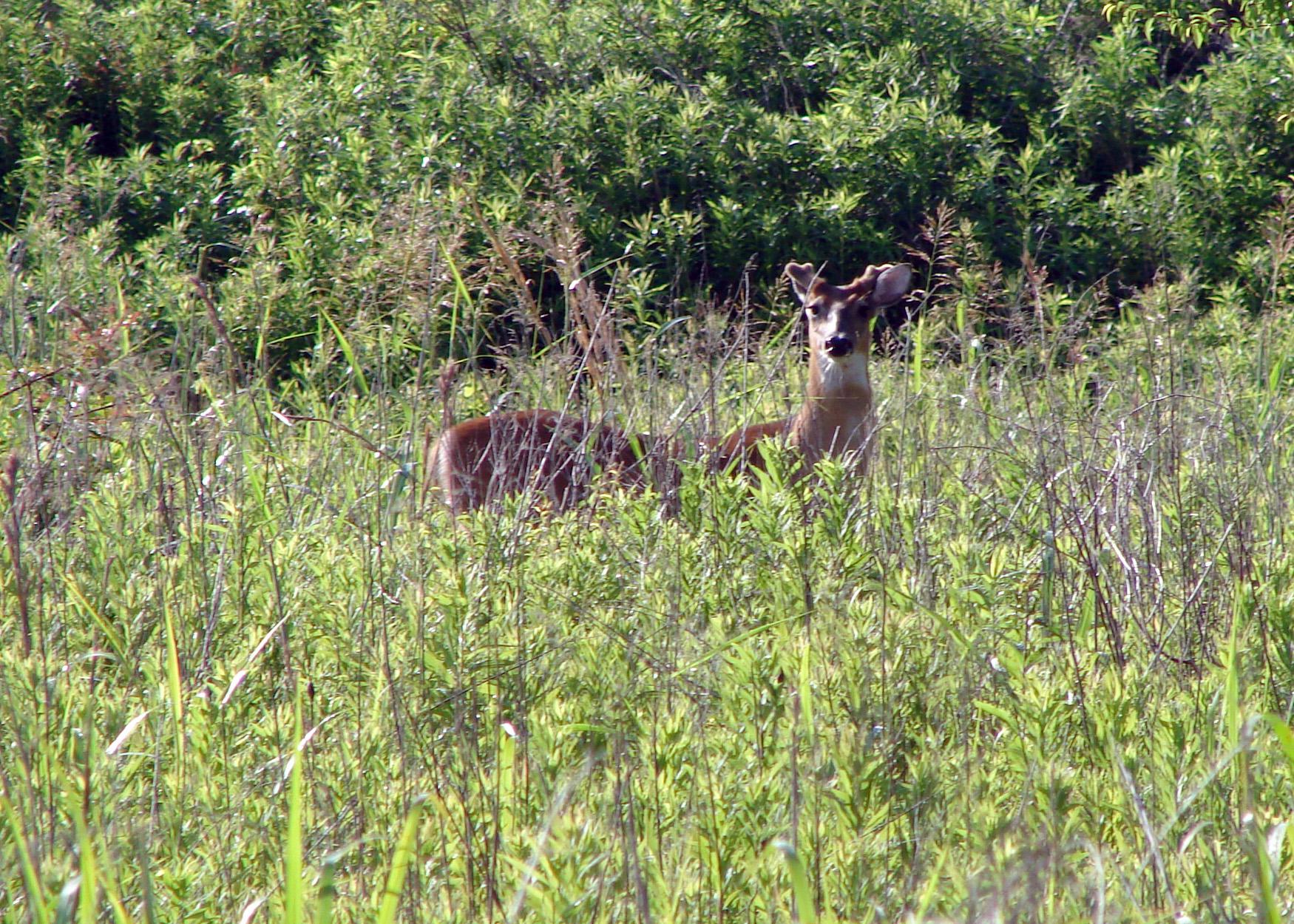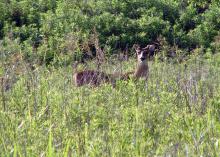Information Possibly Outdated
The information presented on this page was originally released on June 20, 2014. It may not be outdated, but please search our site for more current information. If you plan to quote or reference this information in a publication, please check with the Extension specialist or author before proceeding.
Reconsider captive deer elk and moose operations
By James E. “Jim” Miller
Professor Emeritus, Department of Wildlife Fisheries and Aquaculture
MSU Extension Service
MISSISSIPPI STATE -- Wildife is too important to be owned by an individual.
Thanks to the vision of conservation heroes such as Theodore Roosevelt and Aldo Leopold, people in the United States have abundant public trust wildlife resources. The conservation movement that evolved into the North American model of wildlife conservation is based on the Public Trust Doctrine, which establishes wildlife as a public resource held in trust by governmental agencies for the benefit of the common good.
Unfortunately, in some states there are operations that buy, sell and trade native species of the cervid family -- namely deer, elk and moose. Some businesses also sell products from these animals. They have been banned in other states because of the threat they pose to public trust wildlife resources.
In the states where these facilities exist, cervids, particularly white-tailed deer, are raised in captivity in private enclosures. They are sold as breeding stock to other captive operations, as targets for canned hunts, or for their parts.
Everyone should understand why high fence or captive deer operations are not good for Mississippi’s deer population. For example, captive deer can spread infectious diseases to other wildlife and domestic livestock.
Chronic Wasting Disease, an infectious and always fatal disease, has been confirmed in 22 states, two Canadian provinces and other countries. Captive cervid facilities have been documented as the source of the spread of this disease in 13 of those states and in Canada.
Sometimes captive animals are abused. Having deer or other cervids in captivity makes them less fearful of humans. Another problem is that these businesses lead to misperceptions about fair-chase hunting and commercializing public trust wildlife resources for private benefit instead of public benefit.
Wildlife officials and conservationists frequently cite these documented negative impacts when making a case against captive cervid operations and in support of public trust wildlife resources. However, the captive cervid industry continues to lobby for legislation that would enable these operations to expand without oversight or monitoring by state fish and wildlife agencies.
Historically, Mississippi has regulated and protected its public trust wildlife resources. However, many states are feeling pressure related to those who frame legislation as “economic development opportunities.”
For example, in 2012, 10 states introduced legislation framed as “economic development opportunities” that would have transferred monitoring and regulatory authority from state fish and wildlife agencies to other state agencies or authorities, such as the Department of Agriculture or to the State Veterinarian. Most of these House or Senate Bills efforts were killed after extensive debate.
In the past two years, several states have effectively passed legislation or effected regulatory mandates to prevent the import of cervids into their state because of the increasing threat of infectious disease such animals pose.
At least 21 states have currently effected regulations or legislation that prohibit the import of wild or captive cervids into their state. Previous attempts by the captive cervid industry to expand operations in Mississippi have been stalled by legislators who, due to the education and outreach efforts of wildlife officials, scientists and conservationists, have come to understand the threats and concerns.
Numerous articles based on scientific research, monitoring, and data collections have been published in opposition to these captive cervid operations and to any further expansion of these facilities.
The Mississippi Department of Wildlife, Fisheries, and Parks (MDWFP) is bound by Rule 8.2 “Regulations For Enclosures Preventing the Free Ingress and Egress of Wild Animals” that states that no person may possess a live white-tailed deer in Mississippi unless that person possesses a valid permit issued by MDWFP, and no person may sell a live white-tailed deer.
There are additional regulations from MDWFP pertaining to captive cervid operations in a five-page regulatory document available from the agency. For more information, visit http://www.mdwfp.com/media/77344/enclosures.pdf.
Contact: Dr. Jim Miller, 662-325-2619

Editor’s Note: Extension Outdoors is a column authored by several different experts in the Mississippi State University Extension Service.







